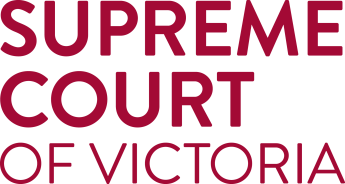The Supreme Court’s information hub provides an insight into the work of the Court.
What's on at the Court
The Supreme Court hears some of the most serious criminal cases and most complex civil cases in the State of Victoria. It also hears some appeals from Victorian courts and tribunals.
The public can view some proceedings first hand or via public live streaming. You can also watch lawyers being admitted to practise law or judges’ welcome and farewell ceremonies in our virtual video library.
To find out what matters are scheduled to be heard visit the Daily Hearing List.
Explainer: Civil courtroom
Do you know who’s who in a civil courtroom?
New public notaries appointed
Justice Stephen O'Meara presided over a ceremonial sitting marking the appointment of 20 new public notaries.
Judgments and summaries
Public access to a selection of recently recorded court hearings.
Gertie's Law
Stream every episode of Gertie's Law, the Court's award winning podcast series.
